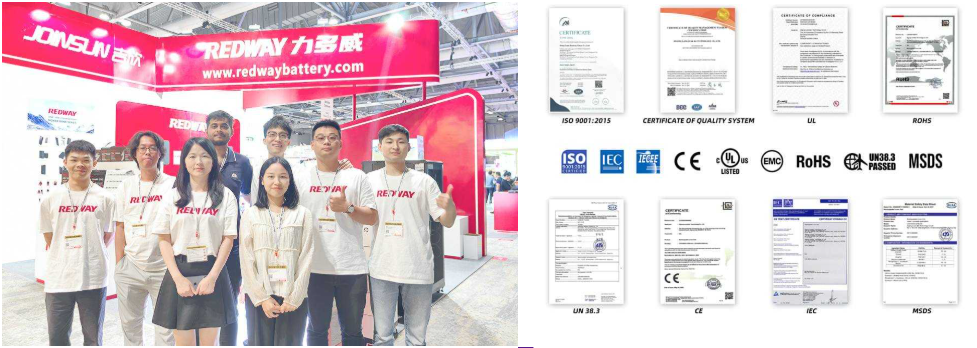The lifespan of a LiFePO4 RV battery is significantly longer than that of traditional lead-acid batteries. While LiFePO4 batteries can last between 5 to 10 years or even longer, lead-acid batteries typically have a lifespan ranging from 2 to 5 years. This difference in longevity makes LiFePO4 a more cost-effective choice over time.
How Long Do LiFePO4 Batteries Typically Last?
LiFePO4 batteries are known for their exceptional longevity, often lasting between 5 to 10 years depending on usage and maintenance. With proper care, some high-quality models can even exceed this range, providing reliable power for thousands of cycles—typically between 4,000 to 15,000 charge cycles.
Chart Title: Lifespan Comparison of Different Battery Types
Wholesale lithium golf cart batteries with 10-year life? Check here.
| Battery Type | Expected Lifespan (Years) | Charge Cycles |
|---|---|---|
| Lead-Acid | 2-5 | 300-500 |
| LiFePO4 | 5-10+ | 4,000-15,000 |
What Is the Expected Lifespan of Lead-Acid Batteries?
Lead-acid batteries generally have a shorter lifespan than their lithium counterparts. Typically lasting between 2 to 5 years, these batteries require more frequent replacements due to their limited cycle life and susceptibility to factors like deep discharges and temperature extremes.
Chart Title: Lead-Acid Battery Lifespan Overview
Want OEM lithium forklift batteries at wholesale prices? Check here.
| Type | Expected Lifespan (Years) | Typical Use Cases |
|---|---|---|
| Flooded Lead-Acid | 2-3 | Basic RV applications |
| AGM Lead-Acid | 3-5 | Moderate power needs |
How Does Cycle Life Differ Between LiFePO4 and Lead-Acid Batteries?
Cycle life is a critical measure when comparing battery types. LiFePO4 batteries can endure significantly more charge cycles—ranging from 4,000 to over 15,000—compared to lead-acid batteries that typically only manage around 300 to 500 cycles before performance degradation occurs.
Chart Title: Cycle Life Comparison
| Battery Type | Average Cycle Life |
|---|---|
| Lead-Acid | 300-500 |
| LiFePO4 | 4,000-15,000 |
Know More:
What Is the Lifespan of a LiFePO4 RV Battery Compared to Lead-Acid?
Can I Use a LiFePO4 Battery as a Backup Power Source for My RV Appliances?
How Much Do LiFePO4 RV Batteries Typically Cost?
How Do Compatibility Issues Arise When Switching to Lithium Batteries in RVs?
What Are the Best Practices for Charging and Discharging LiFePO4 Batteries?
What Factors Influence the Lifespan of LiFePO4 Batteries?
Several factors can affect the lifespan of LiFePO4 batteries:
- Temperature: Operating within recommended temperature ranges is crucial; extreme temperatures can accelerate degradation.
- Depth of Discharge (DOD): Keeping DOD below recommended levels (ideally under 80%) can enhance longevity.
- Charging Practices: Using appropriate chargers and avoiding overcharging are essential for maintaining battery health.
Chart Title: Factors Affecting Battery Lifespan
| Factor | Impact on Lifespan |
|---|---|
| Temperature | High temps reduce lifespan |
| Depth of Discharge | Deep discharges shorten life |
| Charging Practices | Overcharging harms health |
How Does Temperature Affect the Lifespan of RV Batteries?
Temperature plays a significant role in battery performance and lifespan. For optimal operation, both lead-acid and LiFePO4 batteries should be kept within moderate temperature ranges—typically between -20°C and +60°C. Extreme heat or cold can lead to irreversible damage.
Chart Title: Temperature Impact on Battery Performance
| Temperature Range | Effect on Lead-Acid | Effect on LiFePO4 |
|---|---|---|
| Below -20°C | Reduced capacity | Possible damage |
| Above +60°C | Accelerated degradation | Reduced cycle life |
What Are the Cost Implications of Choosing LiFePO4 Over Lead-Acid?
While the initial cost of LiFePO4 batteries is higher than that of lead-acid options, their longer lifespan and lower maintenance requirements make them more cost-effective over time. Investing in a LiFePO4 battery can result in significant savings when considering replacement costs and performance reliability.
Chart Title: Cost Analysis Over Time
| Battery Type | Initial Cost | Replacement Frequency | Total Cost Over Time |
|---|---|---|---|
| Lead-Acid | Lower | Every 2-5 years | Higher overall cost |
| LiFePO4 | Higher | Every 5-10+ years | Lower overall cost |
Why Is Proper Charging Important for Battery Longevity?
Proper charging practices are vital for maximizing battery lifespan. Using chargers designed specifically for each battery type prevents issues like overcharging or overheating—common problems that can severely shorten battery life. Regular monitoring during charging also helps maintain optimal health.
Conclusion
In summary, the lifespan of a LiFePO4 RV battery far exceeds that of traditional lead-acid batteries, making it a superior choice for long-term use. With lifespans ranging from 5 to over 10 years and thousands of charge cycles available, investing in a LiFePO4 battery not only enhances reliability but also provides significant long-term savings.
Expert Views
Choosing a LiFePO4 battery over a lead-acid option is not just about initial costs; it’s about long-term value,” states an expert from Redway. “With their impressive lifespans and low maintenance needs, they represent an intelligent investment for any RV owner looking to maximize their power efficiency.”
FAQ Section
- How often should I replace my lead-acid battery?
Typically every 2 to 5 years depending on usage and maintenance. - Can I extend the life of my lead-acid battery?
Yes, by maintaining proper charging practices and avoiding deep discharges. - Is it worth investing in a LiFePO4 battery?
Absolutely; despite higher upfront costs, their longevity and efficiency make them more cost-effective over time.





